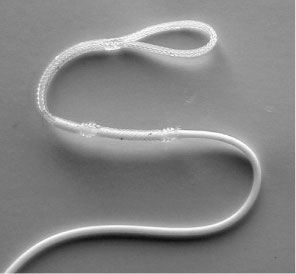
Most anglers avoid fishing right after a cold front blows through the state, but bass in the streams and bayous on Lake Ponchartrain’s North Shore go bananas.
There’s this credit card commercial you’re perhaps familiar with — especially if you’re an LSU football fan.
It’s the one where these rampaging barbarians charge upon some innocent, only to come to an abrupt halt when their intended victim pulls out the proper card.
That commercial reminds me of some redfish I’ve known. They’ve zeroed in on my fly, gills flaring, ready to attack, only to stop dead in their tracks before slowly meandering off.
Most fly fishers in that situation would say, “The fish isn’t interested in my fly. Time to switch.”
But perhaps the fly isn’t the problem. Read what the living legend of our sport, Lefty Kreh, has to say about this:
“Nothing is as important in successful fly fishing as properly presenting the fly. No matter the rod, line or fly used, unless the presentation is correct, the game is over.”
On a trip one spring to False River, my friend Mike Hess and I were working over a shell bed in about 5 feet of water. We knew the redears were bunched up; it was simply a matter of getting the fly before them.
I was using a heavily weighted shrimp pattern on a long leader, and Mike started out likewise.
After several casts with no success, Mike pulled out his leader wallet. It was a zippered pouch with several small Ziploc bags on rings. In each bag was either a leader or a sink tip connector.
Mike explained that by using a braided loop on the end of his fly line, he was able to quickly switch to another size leader or add a sinktip section that would get his fly deeper.
He believed that the floating lines we were using were not allowing our flies to remain on the bottom long enough. It only took a few casts using the sinktips — each one yielding a hand-sized redear — to make a believer out of me.
There is no one leader that works for all situations, which is why having a variety readily available is of such importance.
Consider each of the following situations that might present itself in a day of marsh fishing.
• Poppers and hair bugs.
Wind-resistance flies need leaders with greater mass in the butt section to transfer more energy from the cast to turnover the fly. A good tapered mono leader will suffice.
However, you may need some suppleness if a popper is to be “popped.” In that case, consider a furled leader or polyleader for a butt section, and attach 12 to 16 inches of 12- to 16-pound mono for a tippet.
• Spoon flies in grassy ponds. Up to size 1, spoons can be cast with light rods (6 weight) and thin, supple leaders. Using such a leader allows it to spin or wobble more when retrieved. A thin leader is also less conspicous in clear waters.
You can make your own tapered leader, but the knots can accumulate pond scum. Packaged knotless leaders such as Scientific Angler’s Bonefish/Redfish leader are an alternative.
• Spoon flies for canals and bayous. Here the trick is to get the spoon to sink as you work it along the edges of dropoffs.
Weighted spoon flies have a miserable track record. Far more reds and drum have been caught using a standard spoon, along with a short fluorocarbon leader (it sinks) of about 6 feet. In between the leader and the fly line is a sink tip section, usually 12 to 16 inches in length.
• Weighted flies under a vosi. The vosi is the fly rodder’s popping cork, under which a weighted fly is suspended, usually 18 to 24 inches.
Since weighted flies impart their own momentum, a heavy tapered leader isn’t needed. In fact, you want as light and supple a butt section as possible for the vosi to “pop” loud when you strip your line.
My typical vosi leader consists of 4 feet of 16-pound mono for a butt section, connected to 3 feet of 12-pound fluorocarbon for tippet. The mono butt floats, keeping the vosi at the surface. The floro tippet sinks the weighted fly even faster, allowing it to suspend vertically to the cork (and thus the origin of the name “vertically oriented strike indicator”).
There are numerous makes and types of leader material. Read the package on each to determine what its properties are. For example, “hard mono” is usually very stiff and good for large flies and hair bugs. Frog Hair brand is very supple, and stretches well for tippet protection, but costs a bit more than other brands.
The key to easy-to-change leaders is loop connections. On the fly line, you can add a braided loop connector, available through fly shops. Or you can double over an inch of line, secure a loop using a pair of nail knots, then trim the excess past the second knot.
To make a loop on the leader, which fits into the loop on the fly line, you can use either a surgeon’s loop, a perfection loop or a non-slip mono loop. The surgeon’s is basically a double overhand knot, and is easiest to tie. But the non-slip loop has almost 100 percent break strength and creates a smaller knot.
Having a variety of leaders and tip connectors can improve your results, but only if they’re organized and easily accessible. A leader wallet, such as the Safe Passage by Orvis ($12), is a sound investment.


